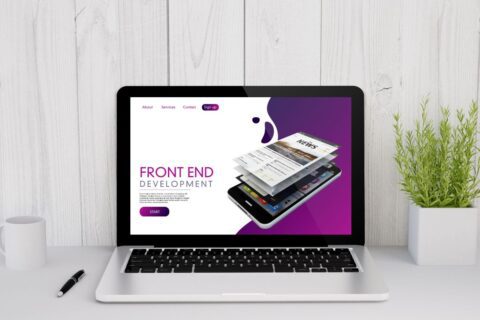When someone visits your website, the very first thing they notice is not just the design—it’s the text. If your fonts are too small, lack contrast, or feel cluttered, people leave before engaging. That’s why testing and improving font readability is critical for both user experience (UX) and SEO performance.
In this blog, we’ll explore the top tools to test font readability, explain how to use them, and share simple ways to improve website font readability so your audience stays engaged.
What is Font Readability and Why It Matters?
Font readability refers to how easily a visitor can read and process your text. It’s different from legibility—where legibility focuses on the clarity of each letter, readability is about the overall experience of reading.
Poor readability can:
- Increase bounce rates.
- Hurt accessibility compliance.
- Create barriers for mobile users.
On the other hand, improving website text clarity builds trust, boosts time-on-page, and helps your content rank better.
Key Factors That Affect Font Readability:
Before diving into tools, it’s important to understand what impacts font readability:
- Font choice: Serif vs. sans-serif.
- Font size & spacing: Small text with tight spacing makes reading difficult.
- Contrast: Light text on a light background kills clarity.
- Devices: Fonts that look good on desktop may fail on mobile.
This is why using typography readability tools is essential—they help measure and refine these factors.
Top Tools to Test Font Readability:
Here are some of the most reliable tools to test font readability for websites:
- Readable.com – Tests text for readability scores and overall clarity.
- Contrast Checker (W3C/WCAG) – Ideal for accessibility font testing by ensuring color contrast standards.
- Fontjoy – Great for comparing font pairings and hierarchy.
- TypeScale – Helps with font scaling and sizing consistency.
- Google Fonts Preview Tool – Lets you test fonts in different weights and on different devices.
- Font legibility checker tools like Legibility Test help ensure your font choices are easy to read across screens.
These tools not only identify readability issues but also provide actionable suggestions to fix them.
How to Use These Tools to Improve Readability?
Knowing the tools is only half the job. Here’s how to apply them effectively:
- Run a font legibility checker on your website’s current typography.
- Use accessibility font testing to ensure compliance with WCAG guidelines.
- Adjust line spacing and contrast based on feedback.
- Preview fonts across devices to confirm website text clarity.
- Re-test regularly to adapt to design changes.
By combining multiple typography readability tools, you’ll create a reading experience that’s smooth and consistent.
Best Practices for Choosing Readable Fonts:
- Stick to web-safe fonts that are proven across browsers.
- Balance branding with practicality (don’t sacrifice readability for style).
- Use responsive scaling so text adapts to mobile devices.
- Test headings and body text separately to avoid clutter.
These practices are simple ways to improve website font readability without heavy redesigns.
Common Mistakes to Avoid in Font Readability:
- Using too many font styles in one design.
- Choosing decorative fonts for body text.
- Ignoring contrast requirements during accessibility font testing.
- Forgetting to test on smaller screens.
Benefits of Readable Fonts Beyond UX:
Readable fonts do more than make your site look nice:
- Lower bounce rates by keeping users engaged.
- Improve accessibility for people with visual impairments.
- Support better SEO since Google considers readability a ranking signal.
- Strengthen your brand image by appearing professional and user-friendly.
Conclusion: Test, Improve, and Enhance Your Website:
Readable fonts are at the heart of a user-friendly and accessible website. By using the right tools to test font readability and applying best practices, you’ll not only make your content easier to consume but also boost engagement, accessibility, and SEO rankings.
Start with a quick audit today—because every small improvement in typography readability tools usage brings you closer to a cleaner, more effective design.
FAQs
What is a font readability test?
A process of analyzing text size, spacing, and contrast using font legibility checker tools to ensure easy reading.
How can I improve website font readability?
By choosing web-safe fonts, maintaining strong contrast, scaling text for mobile, and running regular accessibility font testing.
Why are typography readability tools important?
They provide measurable insights into how easy your text is to read, helping improve website text clarity and accessibility.
Do fonts really affect SEO?
Yes. Poor readability increases bounce rate, while clear fonts improve engagement—both directly impacting SEO rankings.







